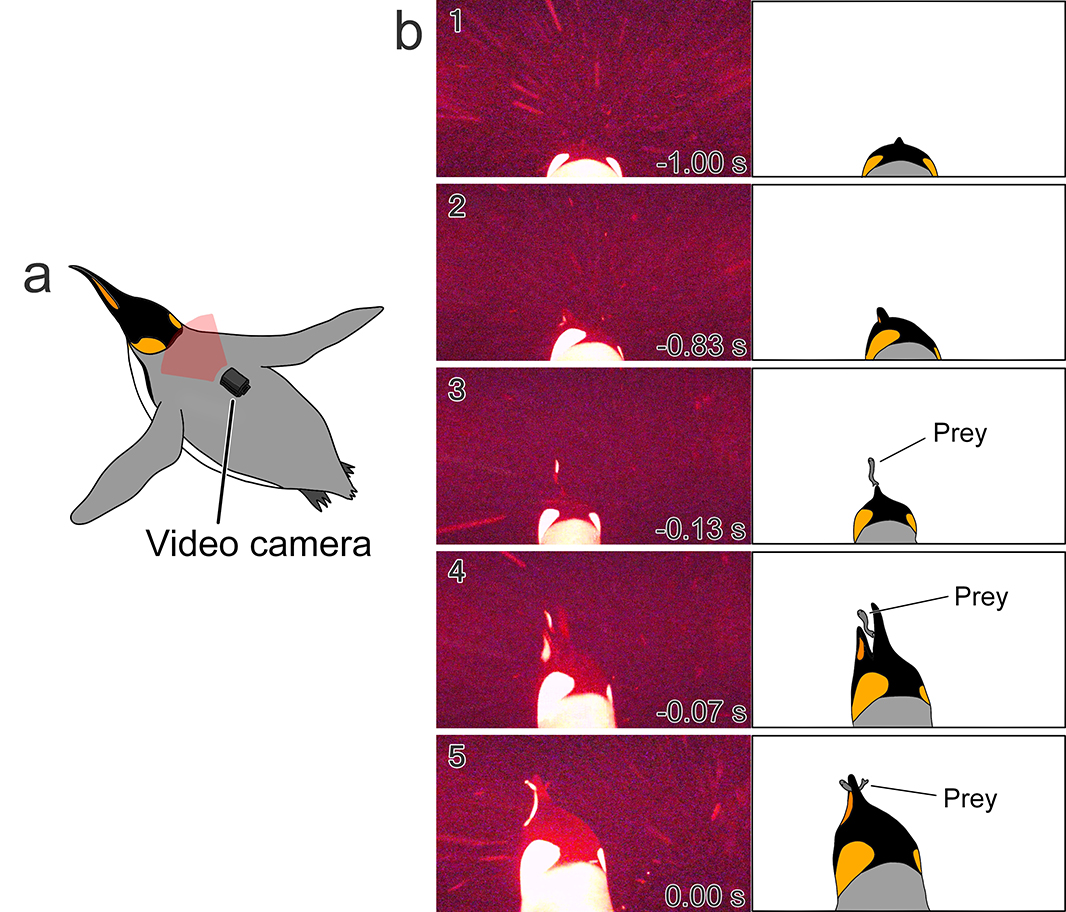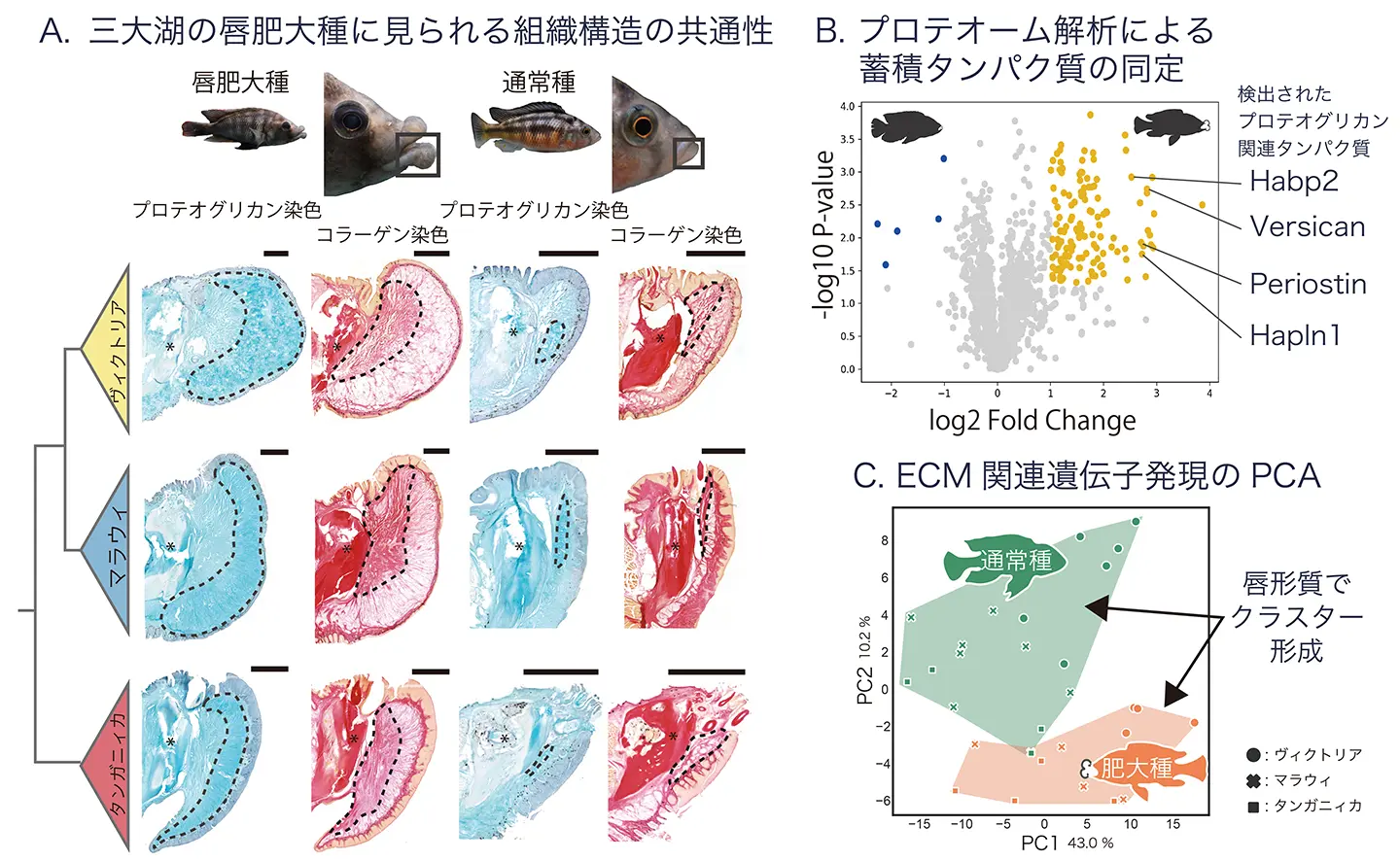2025-05-28 東京大学
 図1:ビデオカメラを装着したキングペンギンと餌の魚を捕まえる瞬間の様子
図1:ビデオカメラを装着したキングペンギンと餌の魚を捕まえる瞬間の様子
<関連情報>
- https://www.aori.u-tokyo.ac.jp/research/news/2025/20250528.html
- https://www.aori.u-tokyo.ac.jp/research/news/2025/files/20250528_summary.pdf
- https://esajournals.onlinelibrary.wiley.com/doi/10.1002/ecy.70117
キングペンギンの深海上昇捕食と被食者の反応を動物搭載ビデオカメラで観測
Deep-sea ascending predation by king penguin and its prey reaction observed by animal-borne video camera
Leo Uesaka, Charles André Bost, Katsufumi Sato, Kentaro Q. Sakamoto
Ecology Published: 26 May 2025
DOI:https://doi.org/10.1002/ecy.70117
Certain air-breathing animals, which spend much of their lives near the ocean surface or on land, are able to capture prey in the deep ocean where the energetics and the time spent foraging are limited by their lung capacity and the amount of dissolved oxygen in their blood. Animal-borne video loggers provide a valuable tool for investigating underwater foraging behavior (Davis et al., 1999). However, capturing video footage at dark ocean depths remains challenging, particularly for penguins. While animal-borne cameras with light sources have been successfully used on large-bodied animals such as seals (Adachi et al., 2021; Foster-Dyer et al., 2023; Heaslip & Hooker, 2008), the smaller body size of penguins restricts the types of devices that can be attached. Although some studies have investigated penguin foraging behavior using video recordings (e.g., Ponganis et al., 2000; Thiebault et al., 2019; Tokunaga et al., 2023), these recordings were not obtained in the low-light environment of the deep sea.
Here, we report a successful recording of deep-sea foraging behavior of a king penguin (Aptenodytes patagonicus) and the prey’s response using a video logger with an LED light source (Figure 1). King penguins, the second largest species of penguin (Spheniscidae), rely on visual cues for foraging (Ainley & Wilson, 2023; Bost et al., 2002; Martin, 1999). They can dive to depths exceeding 100 m, well below the photic zone, in search of food (max: 343 m, Pütz & Cherel, 2005). Their diet primarily consists of myctophid fish (Myctophidae) (Bost et al., 2002; Cherel & Ridoux, 1992), the most abundant mesopelagic fish in the ocean (Catul et al., 2011; de Busserolles et al., 2015). Myctophids also serve as the main food source for other marine species in sub-Antarctic marine regions including southern elephant seals (Mirounga leonina) (Cherel et al., 2008) and Antarctic fur seals (Arctocephalus gazella) (Cherel et al., 1997). As king penguins forage within the constraints of diving duration, limited light availability, and interspecies competition, their foraging strategy provides a unique model for studying the complex challenges of deep-sea foraging. Additionally, video footage of predation events allows for the analysis of prey response behavior in myctophids to king penguins, which remains largely unexplored (Ainley & Wilson, 2023).
(a) Illustration of the penguin equipped with a video logger. (b–f) Foraging event on a small fish, presumably myctophid, including time-series video frames and schematic drawings where (c) the penguin begins directing its neck toward the fish and then (d–f) captures it. The numbers in the bottom right corner represent the time relative to the moment of capture. Video footage is shown in Video S2. Video stills and illustrations credit: Leo Uesaka.
In February 2024, we fitted five king penguins breeding at the Ratmanoff colony, Kerguelen Archipelago (southern Indian Ocean, 49°14’S; 70°33’E), with digital video loggers that included red LED light sources (LoggLaw-CAM, Biologging Solutions Inc., Japan, 38 mm diameter, 67 mm length, 128 g, 30 fps, full HD). These loggers also recorded depth every second and were programmed to start video recording upon reaching 80 m depth using the depth sensor trigger function. They were attached to the penguin’s back using waterproof tape (Tesa, Germany), Loctite glue (Henkel, Germany), and plastic cable ties (Hellermann Tyton, UK). See Appendix S1: Section S1 for details on the potential effects of the light source on penguin and prey behavior. Four penguins were recaptured, and their loggers were retrieved. One of these penguins repeatedly dived for food during the video recording period (1 h 32 min), which occurred at dawn when king penguins typically begin foraging actively (Watanabe et al., 2023). The penguin was on a seven-day foraging trip, with the video recording occurring on the third day, midway through its trip. Although penguins are highly hydrodynamic and the attached logger may have affected the individual’s performance, its trip duration, dive depth (mean: 145 m, n = 704), and dive duration (mean: 4.5 min, n = 704) derived from the full trip data were comparable to those reported in previous studies (Charrassin et al., 2002; Pütz et al., 1998; Scheffer et al., 2016). The other loggers failed to function the depth trigger correctly, and no foraging dives were recorded.
During the video recording period, the penguin made 12 foraging dives (mean dive depth ± SD: 128 ± 31 m) including 10 complete dives and 2 that were only partially recorded (Figure 2a). The penguin exhibited 136 foraging attempts, successfully capturing prey in 118 cases (86.8%). In unsuccessful attempts, the penguin either missed its prey or else detected it and stretched its neck but did not attempt to peck. According to the depth profile, 111 foraging attempts occurred during the penguin’s ascent (Figure 2b,c), accounting for 81.6% of total attempts.


